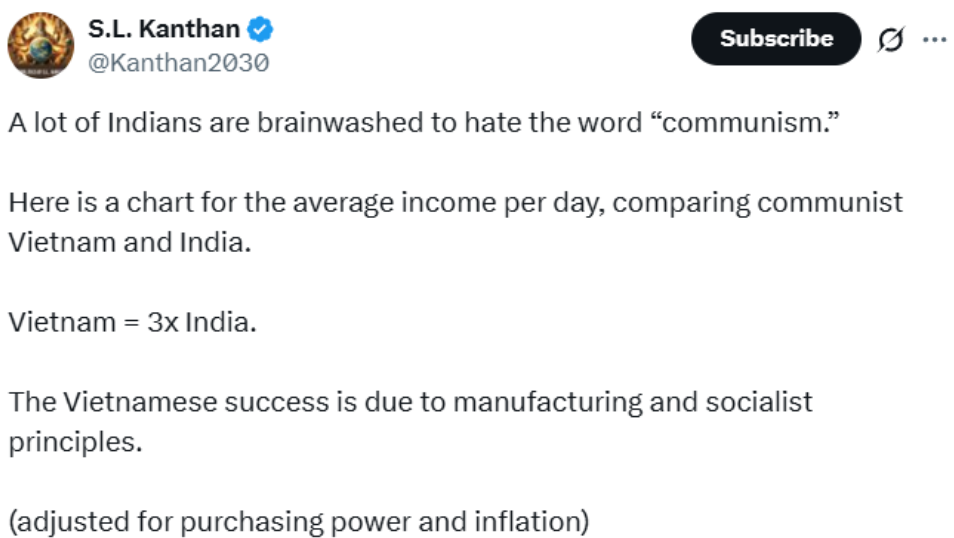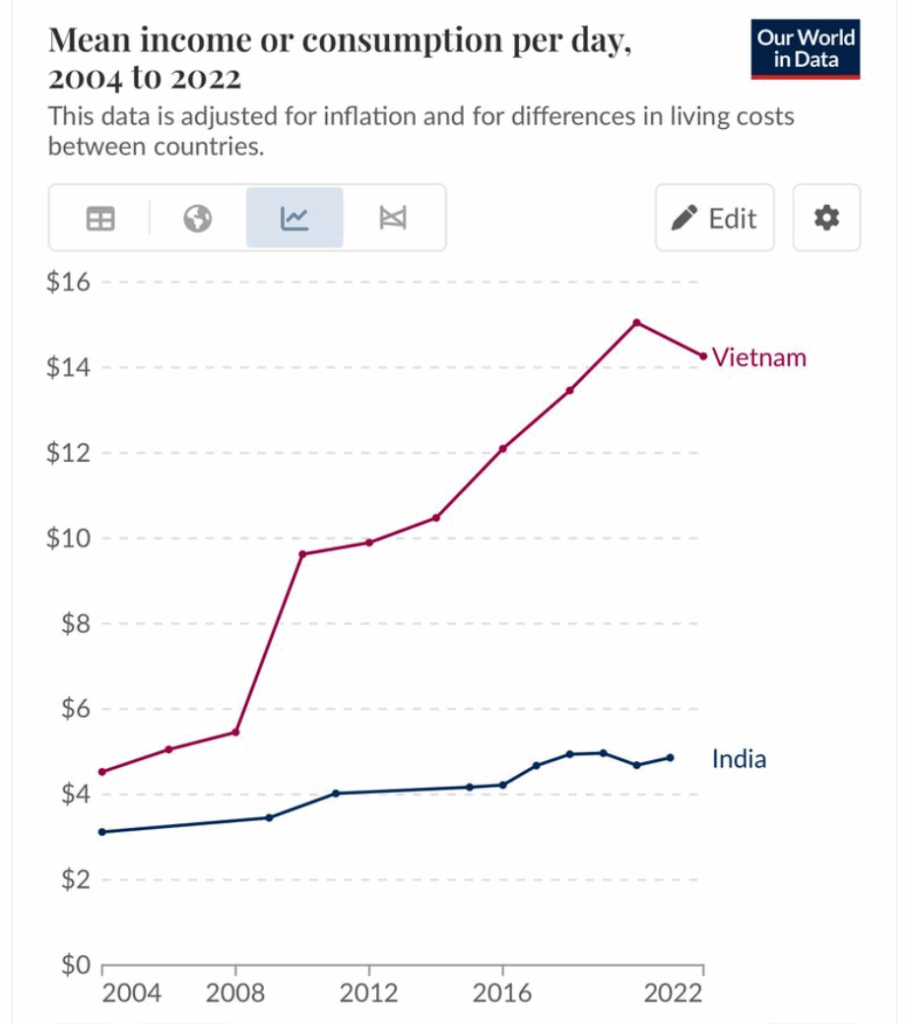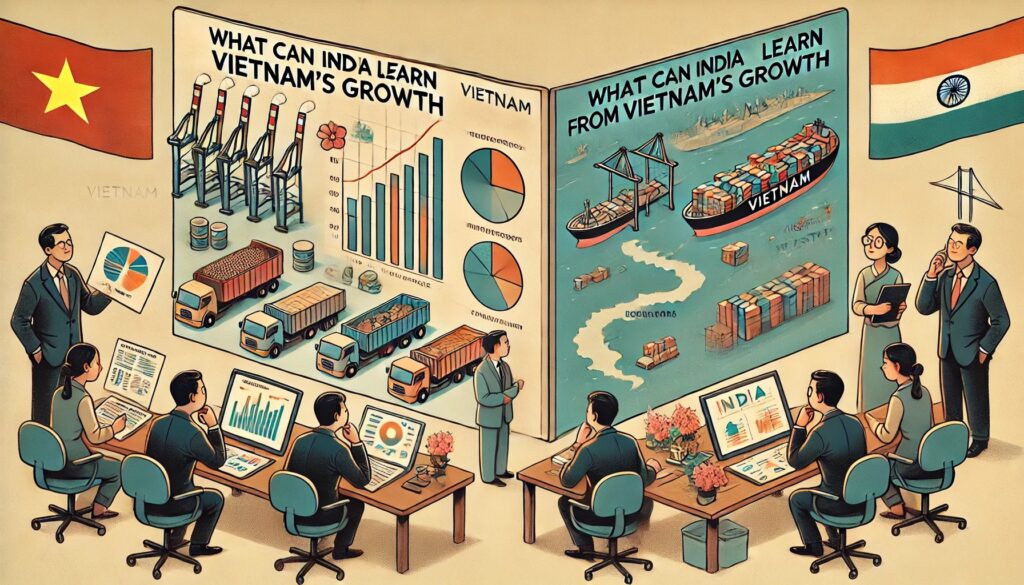Vietnam’s Surprising Growth Pace
Over the last two decades, Vietnam has made impressive strides in increasing its per capita income (see image below).


In 2004, the average daily income in Vietnam was similar to India’s—approximately $4. Today, however, Vietnam’s figure has risen to $14 per day, while India’s remains around $4–5 per day. This significant disparity is not solely due to differences in country size or population. It underscores how quickly smaller nations can advance when their systems and policies prioritize rapid growth.
Role of System Design in Growth
Vietnam operates under a communist system in which the government controls most industries and manufacturing capacities. This structure allows for quick decision-making without the lengthy debates or political delays often seen in other systems. In contrast, India’s democratic governance frequently confronts obstacles, such as multiple layers of approval, political disagreements, and opposition to government policies. While democracy offers many advantages, such as personal freedoms and checks on power, it can sometimes hinder urgent economic initiatives.
🌟 Searching for perfect balance in investing?
Mi AllCap GOLD is here to solve the big questions:
🔶 Where should you invest in equities?
🔶 How to stay calm in volatile times?
✅ 25% each in Large, Mid, Small Caps + Gold
✅ Strongest stocks picked in each segment
✅ Gold as your hedge when markets tumble
✅ Monthly rebalanced – rotational, momentum strategy
Don’t just diversify — balance wisely.
The Manufacturing Advantage
A key factor behind Vietnam’s success is its emphasis on manufacturing. By channeling resources and talent into expanding its industrial base, Vietnam has created more jobs and improved average incomes. India, while making progress, still faces challenges in keeping pace, particularly in manufacturing, where policies can be delayed or obstructed.
Learning from Smaller Countries
Vietnam’s experience is not merely about comparing political systems but rather about recognizing how focus and agility can transform a country’s economic landscape. Despite India’s larger size and complexity, the fundamental takeaway is clear: targeted action, especially in job-generating sectors like manufacturing, can foster economic growth. While India may require more time due to its size and structure, it can benefit from these examples in creating better strategies.
Balancing Speed and Democracy
It’s vital to acknowledge that while swift decision-making is beneficial, it should not come at the expense of personal freedoms and rights. India’s challenge is to strike a balance—upholding its democratic values while ensuring that growth policies do not get mired in endless discussions. Achieving this balance could help India progress toward higher per capita income in the years to come.
What are your thoughts on India’s growth path compared to Vietnam’s? Feel free to share your insights in the comments. If you found this blog informative, please SHARE it with friends and colleagues!











